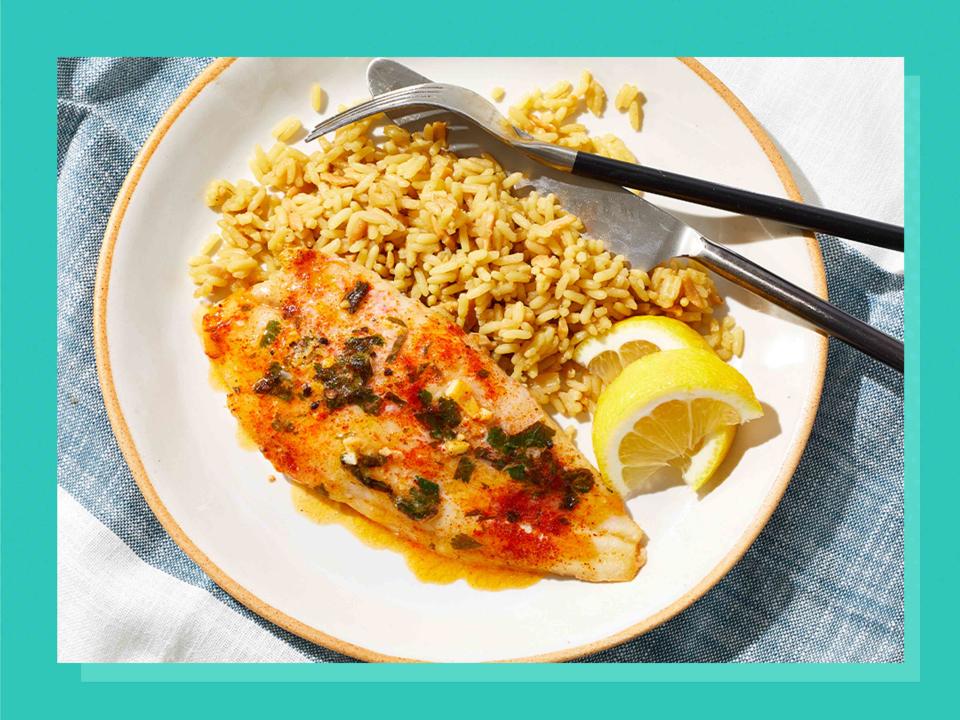The Difference Between Fresh, Frozen, and Canned Seafood
And why “fresh” is generally the last thing you need to be buying.

Allrecipes/Dotdash Meredith Food Studios
How important is it that your seafood be “fresh?” Not as much as you might think. The magic of high-quality freezing methods and gourmet tinned seafood techniques means distance from the dock doesn’t much matter when grabbing ingredients for marinated cod tacos or a sweet shrimp bisque.
While researching my seafood cookbook, I learned that a lot of people define “fresh” seafood as “never frozen,” automatically correlating that with quality. But the quality of most fish begins to deteriorate the moment it’s caught, and the only way to stop that is to freeze or cook it—meaning the best seafood is actually frozen or canned at its peak.
The secret to savvy seafood shopping, whether you live in Dover or Denver, comes in understanding that “fresh” doesn’t always mean “best,” and, even more importantly, it means almost nothing. Depending on the type of fish and how you plan to use it, the best fish might be canned, and the freshest fillet could be frozen. Understanding what each of these three styles brings to the table (pun intended) and how to take advantage of their strengths and weaknesses will save you money at the store, alleviate frustration in the kitchen, and impress everyone you cook for.
When to Buy Fresh Seafood
Fresh, never-frozen seafood is a rare treat–far rarer than most people think: A lot of the fish sold in grocery stores is actually “previously frozen” and even those amazing bites at the sushi counter are often carefully frozen at their peak. Usually, that’s because it’s simply better fish if it doesn’t spend time deteriorating; further, certain fish like wild salmon require freezing to rid them of parasites.
Consider buying truly fresh seafood only if you know exactly where and when the seafood was harvested–something a trusted fish shop should know–and you have a plan for when and how to consume. These are special occasion treats (usually at special occasion prices), so plan to make dishes that show off the unique texture of fresh fish like steamed mussels or poached or pan-fried filets.
When to Buy Frozen Seafood
From a stunning red side of slow-roasted wild sockeye salmon served as the centerpiece of a holiday meal to a handful of frozen shrimp tossed into a hot pan for a quick, crowd-pleasing dinner, frozen seafood works well for almost anything.
Most fish freeze extremely well, and expertly frozen and properly defrosted fish is as good or even better than most “never frozen” products. Sushi counters and poke shops alike use frozen fish, and you should too, in any preparation you please.
One of the biggest advantages to frozen shrimp, small scallops, and slim fillets comes in cooking them straight out of the freezer. Toss them directly into premade or store-bought sauces, stews, or curries for an easy weeknight dinner. Other than shrimp, shellfish tends to work much less well: Frozen crab, mussels, and lobster all exist, but rarely compare to the fresh version. Thankfully, those same shellfish work beautifully in canned formats.
Related:5 Simple (but Important) Tips for Cooking Fish Straight from the Freezer
When to Buy Canned Seafood
Canning fish (which inherently involves cooking it) preserves many of the attributes of freshness. It changes the texture and flavor, but sometimes that just means starting one step ahead on cooking a finished dish.
Salt-packed, smoked, afloat in oil, sauced, or spiced seafood–cooked and sealed into tins, cans, or jars–packs the just-caught flavor into a shelf-stable format. While frozen seafood lasts months in a home freezer, canned seafood lasts years in the pantry.
Mass-market canned tuna or pink salmon are ultra-affordable options on every grocery store’s shelves; they’re ideal for dishes like tuna casserole or salmon loaf. Gourmet delicacies such as smoked mussels, spiced octopus, or sardines in hot sauce need little more than a can opener to turn into a snack. Between those two extremes, many dishes work best with canned seafood: big cans of clams for thick chowder, oil-packed tuna for an elegant salade Niçoise, or salt-packed anchovies for a garlicky bagna càuda dip.

